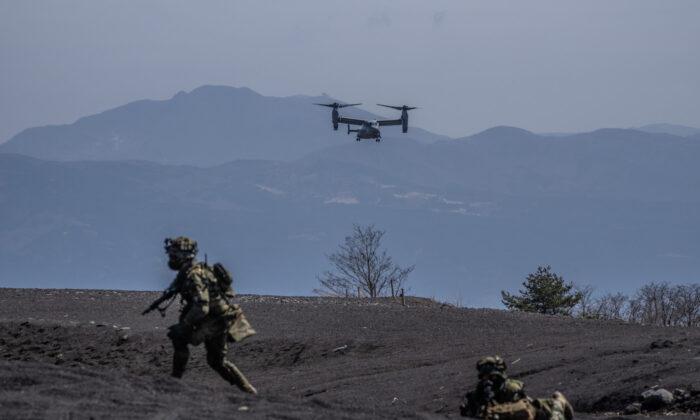The U.S. military could not achieve victory in a war with China using its current, all-volunteer force, according to one expert.
The United States will thus need to radically transform its force structure to better contend with the emerging threat environment, up to and including by reinstating conscription, said Jonathan Askonas, an assistant professor of Politics at Catholic University of America.
“This is a five-alarm fire,” Askonas said during an April 11 discussion with the Hudson Institute think tank. “We’re facing global threats and we have a force structure which we know will not work against those threats.
“We basically can’t fight a war larger than Iraq with the all-volunteer force.”
The all-volunteer force has been a staple of U.S. military organization since 1973, when the draft was terminated along with the United States’ direct involvement in the Vietnam War.
Unfortunately, Askonas said, the all-volunteer force was proving incapable of generating the number of service members required for a war between great powers, and its burdensome logistical processes were likely to be ineffective in either a conflict with China in the Indo-Pacific theater or supporting European powers against Russia.
“We have a Goldilocks problem,” Askonas said. “Our army is too small as constituted to actually prosecute a war with these countries, but it’s large enough that it’s sucking a lot of resources away.”
“We have to be ruthless. We need to adapt our force structure not to hypothetical threats or in some universal Swiss army knife approach, but to the actual threats that we face.”
To that end, Askonas suggested that the military should re-adopt a “cadre” system for deploying the military, not dissimilar to that used in World War II.
Under such a system, the number of resource-heavy full time service members would be decreased in peacetime in favor of investing in expensive, slow-to-build items like warships.
In wartime, officers from this smaller element of the elite fighting force would then serve in cadres designed to be dispersed among units of draftees to train and lead them, effectively increasing the nation’s ability to surge manpower to the front lines.
Such a surge capacity would be invaluable in a conflict with China, whose own military has nearly twice as many personnel as the United States.
“The U.S. military is a tremendously adaptive organization and it’s transformed itself a number of times throughout its history,” Askonas said.
“The number one lesson from Cold War history is you have to adapt your force structure to the problems that you have, the threats that you have.”





